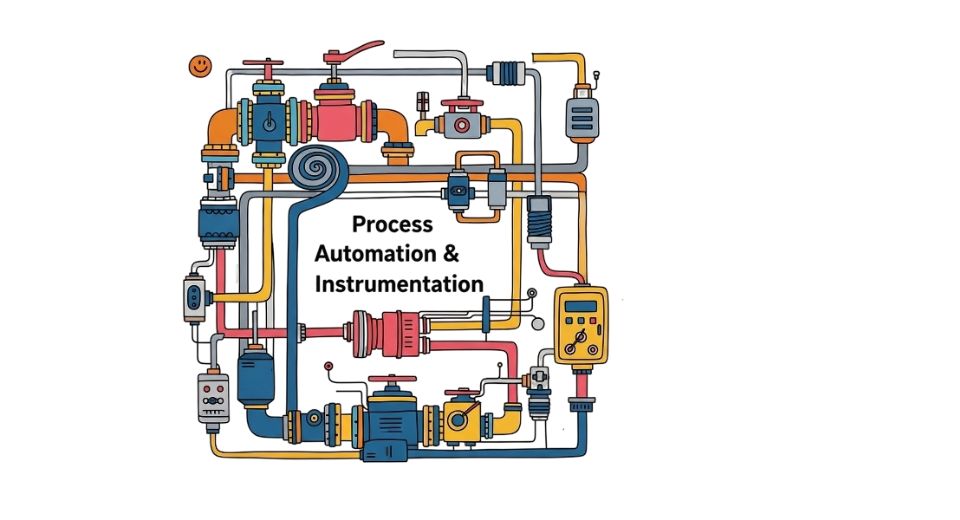
Jul 15, 2025

The just-released publication presented by Metastat Insight presents a thorough examination into the functioning of the Global Process Automation and Instrumentation Market, including a comprehensive overview of its present form, the ongoing changes, and foreseen directions. This analysis diverges from the facile gloss which commonly accompanies such markets and instead centers on the real mechanisms by which automation and instrumentation are shifting industrial processes. It is an indicator of the manner in which operational efficiencies, safety standards, and productivity requirements are transforming conventional processes throughout various industries, driven by accurate instrumentation and tactical automation. Continental industrial activities have been increasingly exposed to a discernible transformation in operational nature over time.
Previously intensive labor practices are now conducted through harmonized systems of sensors, controllers, and software programs that inspect and regulate performance in real-time. The foundation of this change lies in the Global Process Automation and Instrumentation Market, which encompasses what has allowed industries to reconfigure their workflows without detriment to continuity. This change is technological, but also philosophical, where decision-makers are now looking at system integration as more than an add-on, but as a necessary structural component. This larger industrial trend is being driven by the intersection of practical uses. In manufacturing, for example, production lines are ever more characterized by consistency and very limited variation.
Feedback systems and automated control loops are put into place to guarantee that every step of production meets strict specifications. Advanced instrumentation in this regard is to offer precise information that guides real-time feedback. This allows manufacturers to preserve quality while controlling factors like temperature, pressure, and flow—without interrupting production or depending on human watchfulness alone. Likewise, the energy industry has witnessed significant integration of these frameworks, especially in the refining and distribution environments.
The span of automation ranges from primary extraction to downstream processes, wherein numerous checkpoints need faultless coordination. Accuracy instrumentation is the backbone of this pipeline, ascertaining environmental regulation compliance and operational risks reduction. Such changes have not only replaced existing infrastructure but needed a completely different method of system planning and implementation. Among the less-well-debated but no less significant aspects of the Global Process Automation and Instrumentation Market is its impact on staff roles. As regular monitoring and tweaks become the domain of smart systems, the role of humans has shifted towards monitoring, interpretation, and strategic planning.
This has brought about a new focus on technical education and systems awareness among staff, altering the training needs across numerous domains. Consequently, the workplace is no longer a location of human repetition but one of informed judgment, supported by machine-driven insights. The geographic nature of this transformation is also relevant. Various regions are adopting automation and instrumentation at different rates and magnitudes, determined by domestic policy landscapes, industrial maturity, and investment patterns. While areas such as Latin America and Asia have moved towards fast and extensive integration, others are taking a more cautious route, targeting certain sectors where the effect would be direct and real. This has resulted in a quilt of development stages in the Global Process Automation and Instrumentation Market, where advancement does not proceed evenly but is determined by regional features and priorities.
One needs to look at the long-term consequences of this structural shift, too. As industries increasingly rely on integrated systems, adapting and upgrading these mechanisms becomes a strategic imperative. This has led companies to consider not just acquisition, but lifecycle management, where systems are constantly assessed for relevance, effectiveness, and compatibility with evolving standards. Instrumentation and automation products are not ordered as fixed pieces of equipment but are looked at as dynamic pieces within an industrial system that needs to be kept adaptive in response to outside and inside changes. What characterizes the latest stage is the quiet but firm trend toward cross-industry compatibility.
Companies are no longer restricting themselves to standalone implementations but are looking at how automated processes can communicate among departments and even different organizations. The utility of interconnected systems is in the friction reduced and increased transparency, enabling data-driven collaborations that were previously unfeasible. Such integrations evidence a more profound level of strategic alignment, driven significantly by the strong growth and structural sophistication of the Global Process Automation and Instrumentation Market. In short, the report compiled by Metastat Insight provides a comprehensive investigation into the systemic evolution of this market. Nothing is more distant from a miscellaneous set of technological enhancements than the developments in the Global Process Automation and Instrumentation Market. They are a thorough redefinition of the manner in which industries think, execute, and optimize their fundamental operations.
It emphasizes a change from reactive problem-solving to proactive management, from human-dependent controls to coordinated intelligence. As industries across the globe adapt to this new framework, it becomes evident that this market is not just supporting operations—it is reshaping them from the inside out.
Drop us an email at:
Call us on:
+1 214 613 5758
+91 73850 57479